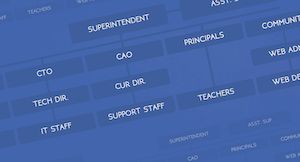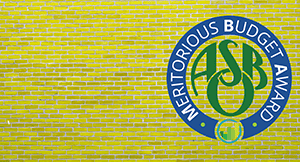
What motivates you–the carrot or the stick?
For most of us, the enticement of a reward or the threat of punishment can each be enough to make us take action. When it comes to a problem as complex as absenteeism, the potential for both prizes and penalties can make a big difference.
Schools are experimenting with different combinations of incentives for improved student attendance and penalties for parents of students with poor attendance records–and they are seeing results. When these systems of penalties and incentives are implemented within a strong culture of support, districts can make real headway toward reversing patterns of absenteeism.
Student Incentives: The Carrot
We know two things for sure about incentives:1. They work.
2. There are many ways to use them.
There’s nothing wrong with a tangible reward every now and then. Research suggests that offering rewards and incentives for good attendance is well worth the effort. Let’s take a look at some different approaches being used in schools around the country.
Star status: Burton Elementary School in Grand Rapids, Michigan, encourages students with the promise of STAR (Studious, Thoughtful, Accountable, Respectful) status, a gold T-shirt, their picture displayed on the school lobby’s television, and an ice cream social with the principal. When excellent attendance is this highly lauded, it becomes something to strive for.

A little recognition goes a long way.
Group acknowledgement: Baltimore, Maryland’s Wolfe Street Academy takes a similar approach to Burton with pizza parties and poster displays, but they also add in an element of group recognition. Each morning, the previous day’s attendance rates are announced, and the grade levels with the best rates receive gold, silver, or bronze stars. This extrinsic motivation shared among a group of students helps to create a team effort toward earning the reward, rather than an everyone-for-themselves approach.
Community incentives:A key to sustained success is periodic incentives, and including the community in the effort to increase attendance is one way to get everyone involved. For the 2022-2023 school year, the Cleveland Browns and the Arby's Foundation teamed up to donate money and incentives to Cleveland schools to reward low absentee numbers. No pro sports in your town? Check in with your local chamber of commerce or business council to see if there are any donations or grants your district can pick up.
Alignment to key tipping points: Research tells us how much missed school is definitely too much—with 15 days being the benchmark for chronic absenteeism—it makes sense to reward students who stay below that key benchmark. When Lincoln High School in Los Angeles set the bar at seven or fewer missed days per year, and they offer a slew of incentives for students who achieve this standard o/f proficiency. The district-wide initiatives saw results, as kindergartners with proficient attendance rose that year from 37% to 62% after just one year of the program and 12% more ninth graders earned proficient attendance.
Enhancing academics: The best kind of incentive also improves academics and ignites students’ passions. Geneva City School District encourages reading habits by offering Kindles as a reward for perfect attendance. They also use grant money to encourage student interests through Boys and Girls Club programming in areas like cooking, horticulture, homework support, and field trips.
Parental Penalties: The Stick
Parental punishments are the other side of the anti-absenteeism coin. From simple warnings to comprehensive programs, there’s a broad range of punishments–some more effective than others–that districts can use to encourage or cajole parents to do what it takes to get their kids to class.Warning systems: The penalty is in the eye of the beholder–for some parents, a mild admonition is all it takes for them to start prioritizing their kids’ attendance. There are countless ways to issue warnings to parents, from robocalls and automatic emails to home visits and cautionary letters. The key is consistency.
Public data: There’s something to be said about making parents aware of the raw attendance data – and how it affects the whole community. Tupelo Public School District publishes daily attendance data on their district webpage, including the total cost of absenteeism across all schools. Districts also create awareness through social media campaigns, school marquee announcements, and advertisements on buses, subways, and metro cards.
Parent & family programs: In the same way that student incentives can be educational, so can parental penalties. Some schools are testing out parental classes and school-home contracts as a way to encourage positive habits and help parents gain the skills necessary to keep their kids on track.
Pre-court interventions + family referrals: Fining or jailing parents for their kids’ unexcused absences does happen, but according to the National Center for School Engagement, there’s actually no evidence that shows these methods help fight truancy. In fact, these practices are more likely to unfairly target and negatively impact families in low-income areas and people of color.
A better approach is a strong system of pre-court interventions. Many programs start by connecting the student’s family with a social worker, case manager, or attendance advocate who can help with everything from getting the kid a new alarm clock to accompanying the family to a therapy appointment.
What’s the bottom line?
When it comes to attendance, some things are for certain:•Sanctions that increase school absence are counterproductive, and there’s no evidence that fining and jailing parents helps. You'll expend less effort and see greater gains by focusing on awareness over penalties.
•Incentives do encourage positive behavior, including better school attendance.
•Accurate tracking is essential–you can’t reward what you don’t record.
Like most things in education, attendance is most likely to improve with a comprehensive, multifaceted approach. There’s a need for more research, but the bottom line is that student incentives are important, parental awareness tactics can help, and a multi-pronged approach is best.
WHAT'S NEXT FOR YOUR EDTECH? The right combo of tools & support retains staff and serves students better. We'd love to help. Visit skyward.com/get-started to learn more.

|
Lindsey Canny Edtech Thought Leader |
Lindsey Canny is a marketing copywriter for Skyward, Inc., a school administration software provider based in Stevens Point, WI. Prior to working at Skyward, Lindsey spent eight years teaching 9th and 10th grade English within the Stevens Point community. Outside of work she enjoys reading books and spending time with her husband and cat.




